Animal fun facts
1.180 articles

Cockroaches have survived for over 300 million years, evolving into one of Earth's most resilient pests. With their ability to withstand radiation, survive without food for months, and squeeze through the tiniest cracks, they've earned their reputation as nearly indestructible. But nature has developed its...

Ladybugs are toxic, but their ability to cause harm to humans is minimal. There are more than 6,000 individual insect spcies in the family Coccinellidae, the family to which all ladybugs belong. Also known as ladybirds, ladybugs are noted for their colorful forewings known as elytra. They are often red with black...

Reptiles are some of the most diverse and ancient creatures on Earth, thriving in nearly every environment—from scorching deserts to dense rainforests. As cold-blooded vertebrates, they rely on their surroundings to regulate body temperature, and their unique adaptations have allowed them to survive for millions...
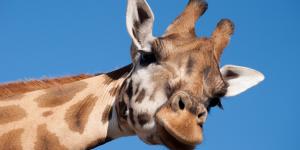
The giraffe, the tallest land mammals on Earth, has a life influenced by its environment and unique adaptations. They are born after falling almost 2 meters to the ground and grow to a height of up to 5.5 meters (18 feet), going through interesting changes as they develop. The big difference in lifespan...
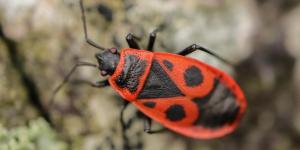
Firebugs are not poisonous and they are not known to carry any disease which is harmful to humans. Despite their alarming name, they do not pose any particular threat to our well-being. Belonging to the Pyrrhocoridae family, the firebug (Pyrrhocoris apterus) is native to Central Europe and Asia, particularly...
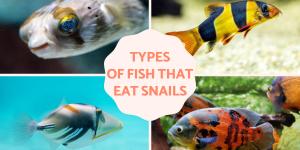
Aquatic ecosystems have a varied range of trophic interactions. This refers to the feeding habits of organisms, including predators, prey and parasites, among others. Predation on snails by certain fish acts as a regulatory mechanism that maintains population dynamics and prevents excessive proliferation....
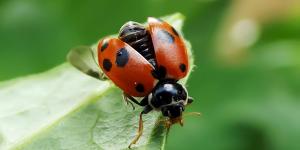
Ever had one of those cute, spotted ladybugs land on your finger and wondered if it could bite? The short answer is yes, but don't worry. While ladybugs do have tiny mouthparts capable of biting, they rarely break human skin and aren't interested in us as food. Their mandibles are designed for munching...

While it may appear as if your dog is howling for no reason, this is not the case. It may not be obvious, but understanding a dog's canine instinct and behavioral traits will help you to understand the reason for their howling. To do so, we need to look at the context of the howling. This can include the genetics...

"Despite their global popularity, goldfish are often wrongly perceived as short-lived, disposable pets. In reality, these resilient fish can thrive for 10-15 years, or more, with attentive care. This raises a common question among owners: what is their typical lifespan, and how is it influenced by environment,...

Choosing the right fish for your aquarium requires various considerations, with their diet being particularly important. Some fish are carnivorous and cannot share a fish tank with species it might eat. Others will need specialized nutrition to ensure health and well-being. Algae eaters are aquarium fish that...

Corydoras catfish are among the most popular freshwater fish for home aquariums, loved for their peaceful nature, fascinating behaviors, and ability to help keep tanks clean. With over 170 recognized species, these bottom-dwelling fish come in a variety of sizes, colors, and patterns, making them a favorite...

Anyone who has shared their home with a cat knows these mysterious creatures have their own unique ways of communicating. From a subtle tail flick to personalized meows just for their humans, cats speak volumes if we learn to listen. While dogs are more obvious, cats communicate with nuance and subtlety,...

Omnivorous fish are water creatures that eat both plants and animals. Unlike fish that only eat one type of food, these adaptable eaters have bodies that can handle different food sources. They can eat things like algae and water plants, as well as insects, tiny shellfish, and smaller fish. This ability...

For 165 million years, dinosaurs reigned over Earth, and their diverse diets were pivotal in shaping their evolution, behavior, and ecological roles. From colossal herbivores that ate vast quantities of plants to formidable carnivores that preyed on other dinosaurs, their feeding habits dictated their...

When you picture life underground, moles are likely one of the first animals that come to mind. Their unique, shovel-like paws and extensive burrowing habits are certainly memorable. A common question, however, is whether these subterranean mammals are truly blind. While many people believe moles are...

We cannot tell a dog we are pregnant directly. We can intimate it during the pregnancy and they will be fully aware of a baby's presence once they are born. Fortunately, dogs are likely aware of the pregnancy thanks to their own perceptive abilities. It is even possible a dog will be aware that their...

One of the most fascinating tales in Asian culture is the story of the koi fish, which represents symbolizing strength, perseverance, and transformation. This ancient story tells of koi fish swimming upstream against powerful currents, with some eventually transforming into majestic dragons, a metaphor for personal...
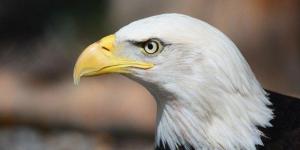
Eagles are among the most powerful birds of prey. With their massive wingspans, razor-sharp talons, and keen intelligence, these birds dominate the skies and serve as top predators in many ecosystems. But what exactly makes eagles so unique? From their legendary eyesight that allows them to spot prey from...

Angelfish are different species of freshwater fish from the genus Pterophyllum. They are one of the most popular freshwater species in aquarium keeping due to their elegance and peaceful behavior, making them great tank mates for a wide variety of aquatic species. They are also highly prized for their physical...

Can dogs sense when their owner is about to go into labor? Many pet owners claim their dogs act differently in the days leading up to childbirth, becoming more protective, clingy, or even restless. But is there any truth to this, or is it just a coincidence? Dogs have an incredible sense of smell and intuition,...

The jaw is a defining feature of vertebrates with teeth, and it plays a crucial role in biting, chewing, and survival. From the powerful jaws of a lion to the flexible hinged jaws of a snake, vertebrate species have developed unique jaw structures and teeth adaptations to match their diets and lifestyles....

Hanging upside down in the canopies of Central and South American rainforests, the sloth has earned its reputation as nature's chilliest mammal. These creatures move at an average pace of just 0.15 miles per hour, making them the undisputed champions of slowness in the animal kingdom. To put this in perspective,...

These majestic animals captivate us with their incredible intelligence, strong family bonds, and complex social lives. But have you ever wondered how elephants create new life? Elephants truly stand out in the animal kingdom when it comes to reproduction. These giants take everything at their own pace, from...

Canids are a diverse family of carnivorous mammals that have adapted to various different habitats on almost every continent. Within the family known as Canidae, there are well-known species. The one with which we have most interaction is the domestic dog, but wolves, foxes, jackals and coyotes are all...
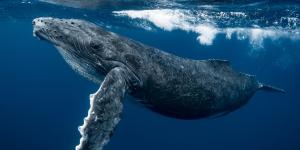
The blue whale (Balaenoptera musculus) is the largest living creature on the planet. A true colossus of the oceans, there are individuals which exceed 110 ft (33.5 m) in length and weigh over 100,000 lb. Their enormous size does not mean they are free from danger. With the impacts of climate change, ocean...

In the crushing depths of the ocean, where sunlight fades and life takes on bizarre forms, lives the oarfish, Regalecus glesne. This extraordinary creature, the longest bony fish on Earth, can grow to a staggering 36 feet. Its rare appearances near the surface, or on beaches, always cause a stir. With its...

Found in the phylum Cnidaria, polyps are small organisms which are essential to marine ecosystems. They are cylindrical in shape and have tentacles, the latter they use for feeding and other behaviors. Almost all are sessile, being attached to certain substrates. It is for this reason they are so important to...
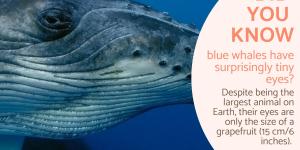
Imagine an animal larger than a jumbo jet, with a heart so massive you could swim through its arteries, that's the blue whale. Narrowing down just 10 fascinating facts about these ocean giants was no easy task because everything about them is extraordinary. They are extraordinary not only because of their...

The jaguar (Panthera onca), the largest wild cat in the Americas and the third largest in the world, is a key apex predator. It plays a vital role in maintaining the balance of ecosystems across its range, which spans from the southwestern United States to northern Argentina. Modern genetic research identifies...
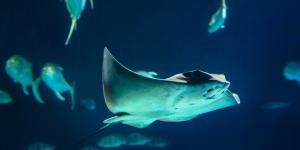
Manta rays are gentle giants, with distinctive fins and impressive size, have a fascinating reproductive process. Unlike egg-laying fish, manta rays give birth to live young, a sophisticated strategy. This journey, from conception to birth, exemplifies marine reproduction, involving complex courtship, internal...

The snailfish belongs to the group of ray-finned fishes (Actinopterygians) and to the family of Lipariidae, generally known as snailfish or slimy fish. Within this family, 29 genera and more than 300 species have been recognized, although there is little information about many of them. Snailfish are...

The term ‘panther’ is not always a strict scientific term. While it is used to describe the big cat species which encompass the genus Panthera, it is also used to cover animals with similar characteristics such as certain types of cougar. There are also significant types of panther which are classified...

Reindeer ( Rangifer tarandus), also called caribou in North America, are one of the most widespread and adaptable members of the deer family. These large mammals thrive across the Northern Hemisphere, from the high Arctic all the way to the southern reaches of boreal forests. This remarkable adaptability...
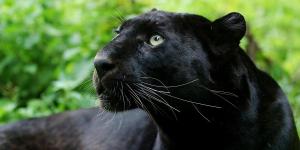
Black panthers are animals which are culturally important worldwide. Symbols of strength, power and pride, many of us have a clear image of this big cat. Despite this, it might be difficult for some of us to answer what animal is a black panther?
The first thing to know is that a black panther is not...

In the depths of forests around the world, a silent shadow glides. We have long been fascinated with black panthers, which may be found in both contemporary and ancient mythologies. However, the truth of these enigmatic felines is much more amazing than any work of fiction. They're not even a single species,...

All types of jellyfish are fascinating animals. Some look like creatures you are more likely to find in a fantasy novel or sci-fi movie, but they are real animals and important members of their aquatic ecosystems. Belonging to the Cnidaria phylum, these gelatinous creatures have a great diversity of...

Many of us speak about calico cats as if they were their own breed. All calicos share distinct characteristics, both physically and genetically, but they are not a specific breed. The calico is a tricolor coat pattern which belongs to various breeds of cat. Of the estimated 600+ million domestic cats in...

Over the course of millions of years, tarantulas have developed advanced hunting methods and a variety of dietary preferences as predators. Understanding what these arachnids eat, both in their natural habitats and in captivity, is crucial for appreciating their role in ecosystems and ensuring their...
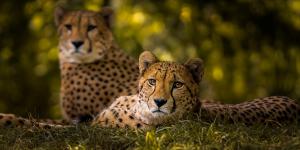
The survival of the cheetah, the world's fastest land animal, depends critically on successful reproduction. These large felines encounter unique reproductive hurdles, such as locating partners in divided habitats and nurturing their young in the unforgiving African wild. The reproduction of cheetahs is especially...

You will be forgiven for thinking there is only one kind of cheetah (Acinonyx jubatus). This iconic feline is a big cat species known for its incredible speed and adaptability to various habitats. While it is true there is only one species of this animal, there are different cheetah types known as subspecies....

From tropical coral reefs to frigid polar waters, sea anemones have adapted to thrive in almost every ocean environment. While they might look like colorful underwater flowers gently swaying in the current, they are actually skilled predators belonging to the phylum Cnidaria. Their unique combination of...

Gorgonians are types of coral which are found in the order Alcyonacea. This order is commonly known as soft corals, containing corals known as sea fans or sea whips. Rather than a distinct taxonomic category, gorgonian corals are an informally grouped subset of corals which are defined by their structure....

While they may look like underwater plants or rocks, corals are actually animals that build the ocean's largest living structures. These remarkable marine creatures, relatives of jellyfish and sea anemones, create complex ecosystems that support a quarter of all ocean life. From tropical reefs to deep ocean...
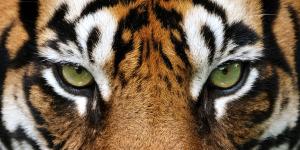
Tigers (Panthera tigris) are among nature's most studied predators, yet their hunting behavior continues to reveal new insights. These solitary hunters succeed through a combination of stealth, strength, and strategy rather than speed or group tactics. From the mangrove swamps of the Sundarbans to the taiga...

Gastropods represent the largest and most diverse class of mollusks, with over 65,000 living species documented across marine, freshwater, and terrestrial environments. From common garden snails to deep-sea slugs, these remarkable invertebrates have successfully adapted to nearly every habitat on Earth...

Deep beneath the ocean's surface, where sunlight can't reach, nature has evolved an extraordinary solution, fish that create their own light. These bioluminescent creatures illuminate the darkness through specialized light-producing organs called photophores, using them to hunt, communicate, and survive...

What do a moose, an eland, and a white-tailed deer have in common? Some are closely related, while others belong to different families but share physical traits. The order Artiodactyla includes a variety of even-toed ungulates, such as the deer family (Cervidae). However, other families in this order, like...

Seahorses are one of the most fascinating creatures in nature. Despite swimming upright and having a strange configuration of fins, these aquatic animals are a type of fish, similar to salmon or sharks. They are also well known for their characteristic reproductive behaviors where the female deposits the...
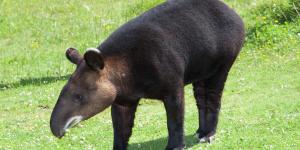
Tapirs are mammals of the Tapiridae, of which there are generally agreed to be four extant species. Although similar in appearance to pigs, tapirs are more closely related to rhinoceroses, horses and other odd-toed ungulates. They are herbivorous, grazing mainly on berries, fruit and leafy vegetation....

Picture yourself in a garden, spotting what looks like a venomous coral snake. But on closer inspection, it turns out to be a harmless milk snake. This phenomenon, called mimicry, is one of evolution's most ingenious survival tactics. In nature, organisms have evolved to imitate not just the appearance...
